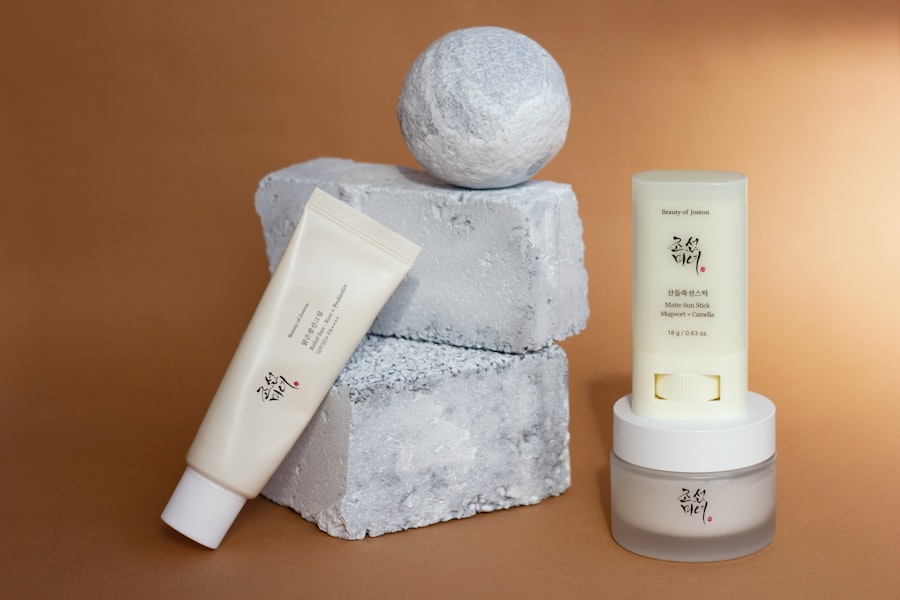When you consider laser hair removal, it’s essential to grasp how the process works. At its core, laser hair removal utilizes concentrated beams of light to target and destroy hair follicles. The laser emits a specific wavelength that is absorbed by the pigment in the hair, leading to its destruction while leaving the surrounding skin unharmed.
As you prepare for your treatment, it’s important to understand that multiple sessions are typically required for optimal results. Hair grows in cycles, and not all hair is in the same growth phase at any given time.
Therefore, you may need anywhere from three to seven sessions spaced several weeks apart to achieve the desired level of hair reduction. During your initial consultation, your practitioner will assess your skin type, hair color, and treatment goals to create a personalized plan that suits your needs.
Key Takeaways
- Laser hair removal targets hair follicles with concentrated light to inhibit future hair growth
- Shave the treatment area before the appointment and avoid sun exposure and tanning products
- Apply aloe vera or cold compress to soothe any redness or swelling immediately after treatment
- Avoid hot showers, saunas, and excessive sweating for 24-48 hours after treatment
- Moisturize the treated area and protect it from sun exposure for at least 1 week after treatment
Preparing for Laser Hair Removal Treatment
Preparation is key to ensuring a successful laser hair removal experience. Before your first appointment, you should avoid sun exposure for at least four weeks. Tanning can increase the risk of side effects and may affect the efficacy of the treatment.
If you have recently tanned or have a sunburn, it’s advisable to reschedule your appointment until your skin has returned to its normal tone. Additionally, you should refrain from waxing, plucking, or electrolysis for at least four to six weeks prior to your treatment. These methods remove hair from the follicle, which is counterproductive to laser hair removal.
Instead, shaving is recommended a day or two before your session, as it leaves the hair shaft intact while allowing the laser to effectively target the follicle beneath the skin. Your practitioner may provide specific instructions tailored to your individual situation, so be sure to follow their guidance closely.
Immediate Aftercare Steps

After your laser hair removal session, immediate aftercare is crucial for minimizing discomfort and ensuring optimal results. You may experience some redness and swelling in the treated area, similar to a mild sunburn. Applying a cool compress can help soothe any irritation and reduce inflammation.
Sunburn It’s important to avoid hot showers, saunas, or intense workouts for at least 24 hours post-treatment, as these can exacerbate irritation. In addition to cooling the area, you should also apply a gentle moisturizer or aloe vera gel to keep the skin hydrated. Avoid using harsh products or exfoliants on the treated area for at least a week, as your skin will be more sensitive than usual.
If you experience any unusual side effects, such as blistering or excessive swelling, don’t hesitate to contact your practitioner for advice.
24-48 Hours Aftercare
| Metrics | Values |
|---|---|
| Number of follow-up calls made | 35 |
| Percentage of patients reporting pain | 20% |
| Number of patients requiring additional medication | 15 |
| Percentage of patients with improved symptoms | 80% |
In the 24 to 48 hours following your treatment, it’s essential to continue caring for your skin with caution. You may notice that the redness begins to subside, but it’s still important to avoid direct sun exposure during this time. If you must go outside, apply a broad-spectrum sunscreen with an SPF of at least 30 to protect your skin from UV rays.
This will help prevent pigmentation changes and ensure that your skin heals properly. During this period, you should also avoid any activities that could irritate the treated area. This includes swimming in chlorinated pools or hot tubs, as well as engaging in activities that cause excessive sweating.
If you feel any discomfort, over-the-counter pain relievers like ibuprofen can help alleviate it. However, always consult with your practitioner before taking any medication post-treatment.
1 Week Aftercare
As you enter the week following your laser hair removal session, it’s important to continue monitoring your skin’s condition. By now, any initial redness should have significantly diminished. However, you may notice some shedding of hair in the treated area as the follicles are destroyed and hair falls out naturally.
This process can take up to two weeks, so don’t be alarmed if you see hair still present; it’s part of the normal cycle. During this week, maintain a gentle skincare routine. Stick to mild cleansers and avoid any products containing retinoids or acids that could irritate your sensitive skin.
If you experience any itching or discomfort, applying a fragrance-free moisturizer can help soothe the area. Remember that patience is key; results won’t be immediate, but with each session, you’ll notice a gradual reduction in hair growth.
2 Weeks Aftercare
Two weeks after your treatment marks a significant point in your recovery process. By now, most of the shedding should have occurred, and you may start noticing areas where hair growth has significantly reduced or ceased altogether. This is an encouraging sign that the treatment is working effectively.
However, it’s still crucial to adhere to proper aftercare practices during this time. Continue protecting your skin from sun exposure by applying sunscreen daily and wearing protective clothing when outdoors. If you’re planning on engaging in activities that may cause sweating or irritation, such as vigorous exercise or swimming, consider postponing them until you’re certain your skin has fully healed.
Additionally, if you have any concerns about how your skin is responding or if you notice any unusual changes, reach out to your practitioner for guidance.
4 Weeks Aftercare
At four weeks post-treatment, you should be well on your way to enjoying smoother skin with less hair growth in the treated areas. This is also an ideal time to evaluate how well your skin has responded and whether any follow-up treatments are necessary. Many practitioners recommend scheduling your next session around this time frame to maintain progress and ensure continued effectiveness.
During this period, it’s essential to keep up with your skincare routine while being mindful of any changes in your skin’s sensitivity. If you’ve experienced any adverse reactions or if certain products seem irritating, consider adjusting your routine accordingly. Staying hydrated and maintaining a balanced diet can also support healthy skin recovery and enhance overall results.
Long-Term Aftercare for Maintenance
Long-term aftercare is vital for maintaining the results of your laser hair removal treatments. While many individuals experience significant hair reduction after several sessions, some may require occasional touch-ups every six months or so to keep unwanted hair at bay. Your practitioner will help determine a maintenance schedule based on your individual needs and how well your skin responds over time.
In addition to regular touch-ups, continue practicing good skincare habits even after achieving desired results. This includes using sunscreen daily and avoiding harsh chemicals that could irritate sensitive areas. Staying informed about new products and techniques in skincare can also help you maintain healthy skin long-term.
Remember that laser hair removal is not just a one-time solution; it requires ongoing care and attention to ensure lasting smoothness and confidence in your appearance. In conclusion, understanding the entire process of laser hair removal—from preparation through long-term maintenance—can significantly enhance your experience and results. By following these guidelines and staying committed to aftercare practices, you can enjoy smoother skin and reduced hair growth for years to come.
After undergoing laser hair removal, it is crucial to follow a proper aftercare timeline to ensure optimal results. One helpful resource for understanding the necessary steps for post-treatment care is the blog section of In Laser Hair Removal’s website. In their blog, they provide detailed information on how to care for your skin after laser hair removal, including tips on moisturizing, avoiding sun exposure, and managing any potential side effects. For more in-depth information on laser hair removal treatments and aftercare, visit In Laser Hair Removal’s blog.
FAQs
What is the typical aftercare timeline for laser hair removal?
The typical aftercare timeline for laser hair removal involves avoiding sun exposure and heat for the first 24-48 hours, followed by gentle exfoliation and moisturizing to help the treated area heal.
When can I resume normal activities after laser hair removal?
You can typically resume normal activities immediately after laser hair removal, but it’s important to avoid sun exposure and heat for the first 24-48 hours to prevent any potential complications.
How long should I wait before exfoliating the treated area after laser hair removal?
It is recommended to wait at least 5-7 days before exfoliating the treated area after laser hair removal to allow the skin to heal properly.
When can I start using moisturizer on the treated area after laser hair removal?
You can start using moisturizer on the treated area immediately after laser hair removal to help soothe the skin and promote healing.
How long should I wait before scheduling my next laser hair removal session?
It is recommended to wait 4-6 weeks before scheduling your next laser hair removal session to allow the hair to grow back and be effectively targeted by the laser.






